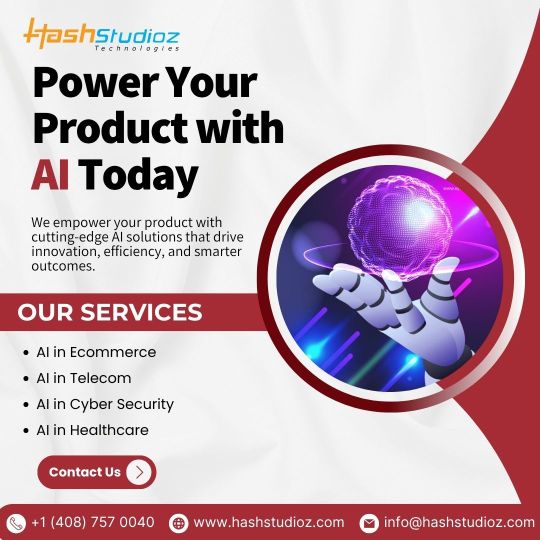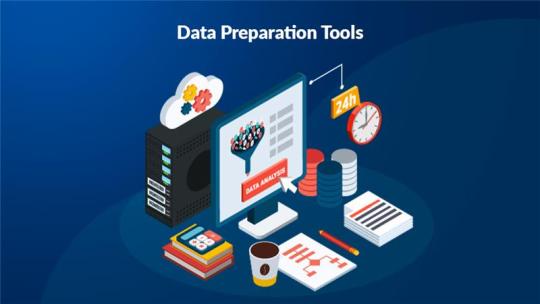#AI and Machine Learning Integration
Explore tagged Tumblr posts
Text
#AI and Machine Learning#AI and Machine Learning Integration#AI app development#AI and ML integration
0 notes
Text
The Future of IoT: Trends Shaping the Connected World

The Internet of Things (IoT) is revolutionizing industries, transforming the way businesses operate, and reshaping everyday life. From smart homes to industrial automation, IoT is at the heart of the digital transformation. At SV Soft Solutions, based in Vijayawada, we specialize in delivering cutting-edge IoT solutions that help businesses stay ahead in this rapidly evolving technological landscape. In this blog, we’ll explore the key trends shaping the future of IoT and how they are driving new opportunities for innovation and growth.
1. Edge Computing: Enabling Faster and Smarter Decisions
As IoT devices proliferate, the volume of data they generate is immense. Traditional cloud-based processing often struggles to handle the real-time demands of IoT applications. This is where edge computing comes in. By processing data closer to where it is generated—at the edge of the network edge computing reduces latency and allows for faster decision-making. For industries like healthcare, manufacturing, and retail, this trend is critical as it enables real-time analytics and enhances the overall efficiency of IoT solutions.
At SV Soft Solutions, we integrate edge computing into our IoT offerings, ensuring that our clients benefit from fast, secure, and scalable systems.
2. 5G Connectivity: Boosting IoT Capabilities
The arrival of 5G networks is a game-changer for IoT. With higher bandwidth, lower latency, and more reliable connections, 5G is set to supercharge IoT devices and applications. This new level of connectivity will allow millions of devices to communicate simultaneously, facilitating advancements in areas like autonomous vehicles, smart cities, and industrial automation.
In Vijayawada and beyond, businesses are poised to leverage the power of 5G to build smarter, more connected systems. SV Soft Solutions is ready to help companies harness the full potential of this technology through our innovative IoT development services.
3. AI and Machine Learning Integration: Enhancing IoT Intelligence
The integration of Artificial Intelligence (AI) and Machine Learning (ML) with IoT is paving the way for more intelligent, autonomous systems. AI algorithms can process the vast amounts of data generated by IoT devices, making it possible to detect patterns, predict outcomes, and automate decision-making.
For example, in smart factories, AI-powered IoT systems can monitor equipment in real time, predict maintenance needs, and even optimize production processes without human intervention. SV Soft Solutions leverages AI and ML to provide clients with smarter, data-driven IoT solutions that enhance efficiency and reduce costs.
4. IoT Security: Safeguarding Connected Devices
With billions of devices connected to the internet, ensuring the security of IoT systems has become more crucial than ever. IoT security is one of the top priorities for businesses looking to adopt connected technologies. As cyber threats continue to evolve, organizations must implement robust security measures to protect sensitive data and prevent unauthorized access.
At SV Soft Solutions, we understand the importance of securing IoT ecosystems. We provide comprehensive IoT security services, from encryption and secure device management to risk assessments, ensuring that our clients’ IoT systems are protected against the latest threats.
5. Sustainability and Green IoT: Driving Environmental Change
The IoT industry is also playing a pivotal role in promoting sustainability. Green IoT solutions are being developed to reduce energy consumption, optimize resource management, and lower carbon footprints. From smart grids to energy-efficient buildings, IoT is helping organizations minimize waste and promote sustainable practices.
At SV Soft Solutions, we are committed to delivering sustainable IoT solutions that not only drive innovation but also support environmental responsibility.
6. IoT in Smart Cities: Creating the Urban Future
As urban populations grow, cities are increasingly adopting IoT technologies to improve infrastructure, enhance public services, and provide a better quality of life for residents. Smart city solutions include everything from intelligent traffic management systems and energy-efficient street lighting to real-time air quality monitoring.
In Vijayawada and other emerging smart cities, IoT is becoming the backbone of urban development. At SV Soft Solutions, we are at the forefront of this transformation, offering customized IoT solutions that help cities become smarter, safer, and more sustainable.
Conclusion: Embrace the Future with SV Soft Solutions
The future of IoT is bright, with new trends continuously emerging and pushing the boundaries of what’s possible. Whether it’s through edge computing, AI integration, or 5G connectivity, businesses are poised to experience unprecedented levels of innovation and efficiency.
At SV Soft Solutions, we are dedicated to helping businesses in Vijayawada and beyond leverage these trends to stay competitive and thrive in the connected world. With our expertise in IoT development, we provide tailored solutions that meet the unique needs of our clients, ensuring they are well-positioned for the future.
Ready to explore the possibilities of IoT for your business? Contact SV Soft Solutions today and let’s build the future together!
For more details
Contact: +91 8121115678
https://svss.co.in/
0 notes
Photo

Hinge presents an anthology of love stories almost never told. Read more on https://no-ordinary-love.co
555 notes
·
View notes
Text
6 Game-Changing BIM Trends in 2023

Introduction
In the ever-evolving landscape of the Architecture, Engineering, and Construction (AEC) industry, Building Information Modeling (BIM) continues to play a pivotal role in transforming the way projects are planned, designed, constructed, and managed. As we step into 2023, it's crucial to explore the emerging trends that are set to reshape the AEC sector and push the boundaries of BIM technology. In this blog post, we delve into the in-depth analysis of the BIM trends that are expected to define the industry in 2023.
1. Cloud-Based BIM Collaboration:
One of the most significant trends in 2023 is the increasing adoption of cloud-based BIM collaboration. Cloud technology allows stakeholders to access and collaborate on a centralized BIM model from anywhere in the world, fostering real-time collaboration and improving project efficiency. This trend is driven by the need for seamless communication among project teams, including architects, engineers, contractors, and facility managers.
2. AI and Machine Learning Integration:
The integration of Artificial Intelligence (AI) and Machine Learning (ML) into BIM processes is gaining momentum. In 2023, we can expect to see advanced AI algorithms being used to analyze massive datasets generated by BIM models. This will enable more accurate predictions regarding project timelines, cost estimates, and even potential risks. Machine learning algorithms can also enhance design optimization and automate routine tasks, allowing professionals to focus on more complex and creative aspects of their work.
3. Generative Design and Parametric Modeling:
Generative design, coupled with parametric modeling, is poised to revolutionize the design phase of construction projects. By leveraging algorithms to explore countless design iterations based on predefined parameters, architects and engineers can generate innovative and optimized solutions. This trend not only accelerates the design process but also results in more sustainable and cost-effective structures.
4. Digital Twins for Lifecycle Management:
Digital Twins, virtual replicas of physical assets or systems, are becoming an integral part of BIM workflows. In 2023, we anticipate an increased focus on using Digital Twins for lifecycle management of buildings and infrastructure. From construction to operation and maintenance, Digital Twins provide a holistic view of a project, enabling better decision-making, predictive maintenance, and improved overall performance.
5. Augmented Reality (AR) and Virtual Reality (VR) in BIM:
The convergence of BIM with Augmented Reality (AR) and Virtual Reality (VR) is set to enhance the visualization and communication of construction projects. Stakeholders can experience virtual walkthroughs of a building before it's constructed, identify potential issues, and make informed decisions. This immersive experience not only improves collaboration but also aids in client presentations and stakeholder engagement.
6. Blockchain for Data Security and Collaboration:
As BIM involves the sharing and collaboration of sensitive project data, ensuring its security and integrity is paramount. Blockchain technology is emerging as a solution to address these concerns. In 2023, we expect to see increased adoption of blockchain in BIM processes, providing a decentralized and secure platform for data exchange, version control, and audit trails.
Conclusion
The AEC industry is standing on the precipice of a BIM revolution in 2023. The trends outlined above showcase the industry's commitment to leveraging cutting-edge technologies to enhance collaboration, efficiency, and innovation throughout the project lifecycle. As professionals embrace these trends, they will not only stay competitive in the market but also contribute to the evolution of a more sustainable and technologically advanced AEC sector. Embracing these trends is not just a choice but a necessity for those looking to shape the future of the industry.
At ProtoTech Solutions, Elevate your project management and design processes with customized BIM Application Development Services. From conceptualization to implementation, we craft solutions that seamlessly integrate into your existing systems, providing the AEC industry with the tools needed to excel in a dynamic and competitive landscape.
#BIM Trends in 2023#BIM Trends#AEC Industry#Cloud-Based BIM Collaboration#AI and Machine Learning Integration#Digital Twins#Augmented Reality#Virtual Reality#Blockchain#BIM Application Development
0 notes
Text
SaaS Opportunities in 2023 and Beyond
Software as a Service (SaaS) has evolved from a niche market to a mainstream industry giant, changing the way businesses operate across the globe. The SaaS model, wherein software is provided on a subscription basis via the cloud, offers a combination of flexibility, scalability, and cost-effectiveness. But as the SaaS industry matures, where are the opportunities in 2023 and beyond? Let’s…

View On WordPress
#AI and Machine Learning Integration#Consumer SaaS#Micro-SaaS#Saas#SaaS Opportunities in 2023 and Beyond#Vertical SaaS
0 notes
Text
still salty that a random tech startup bought a beloved tumblrina playlist maker from inevitable shutdown, failed to relaunch the site, left it abandoned for years only relaunch it as their own thing at the corpse of a website/brand they have bought
#Dev Talks#dev vents#and yes the ai integration has only added salt to the wound... like this is not spotify. forever resentful for how marketable#machine learning has became and now people are just incorporating gen ai into anything that vaguely sticks#'ohh we have a taste of spotify royalties fees and if you dont pay us the privilege of letting our music exist in your platform we will#dmca your website into oblivion'#-_-#the worst part is that i dont think 8tracks or any website that host user uploaded audio can really exist anymore#not at least without some drm tech involved#getting sentimental over a dead website once more -_-#oh wait. reaching comprehensions moment. 8tracks is on life support my point still stand with wary caution#READING**
7 notes
·
View notes
Text
Abathur

At Abathur, we believe technology should empower, not complicate.
Our mission is to provide seamless, scalable, and secure solutions for businesses of all sizes. With a team of experts specializing in various tech domains, we ensure our clients stay ahead in an ever-evolving digital landscape.
Why Choose Us? Expert-Led Innovation – Our team is built on experience and expertise. Security First Approach – Cybersecurity is embedded in all our solutions. Scalable & Future-Proof – We design solutions that grow with you. Client-Centric Focus – Your success is our priority.
#Software Development#Web Development#Mobile App Development#API Integration#Artificial Intelligence#Machine Learning#Predictive Analytics#AI Automation#NLP#Data Analytics#Business Intelligence#Big Data#Cybersecurity#Risk Management#Penetration Testing#Cloud Security#Network Security#Compliance#Networking#IT Support#Cloud Management#AWS#Azure#DevOps#Server Management#Digital Marketing#SEO#Social Media Marketing#Paid Ads#Content Marketing
2 notes
·
View notes
Text
Revolutionizing Enterprises: CXO’s GenAI Transformation

1. Unlocking AI’s Potential: A Strategic Overview
AI adoption, embraced by 70% of executives, promises enhanced customer experiences despite challenges. Understanding and integrating AI into business operations is essential. Explore our guide for actionable insights, ensuring businesses not only survive but thrive in the AI-driven era.
Learn more about Artificial Intelligence impact in 2025
AI Reshaping Decision-Making in 2025
Generative AI, like GPT, simplifies business processes. It transforms decision-making with its user-friendly interfaces, self-learning capabilities, and efficient sorting.
Furthermore, it’s a budget-friendly solution with no training fees, making it accessible for businesses of various sizes.
Our guide aims to offer practical insights for responsibly adopting this transformative technology. Following our roadmap allows businesses to navigate the Generative AI landscape, ensuring success in the constantly changing digital environment.
To stay informed and up to date with the latest trends, join our webinars featuring industry experts from organizations like Microsoft, Shell, and more.
C-Suite Roles Transformed by AI

Strategic AI Adoption Tips for Leaders
To successfully adopt AI, prioritize it for strategic goals, use tailored features, and embrace multilingual capabilities. Ensure secure deployment for data integrity. Offices that adopt AI enjoy streamlined processes, ongoing innovation, and secure frameworks.
2. Transforming C-Suite Roles with AI
Empowering CIOs: Innovating IT with AI
In enterprise IT, AI, particularly models like GPT, empowers CIOs to break traditional boundaries and improve operations through groundbreaking innovations.
Use Cases:
· Smart IT Helpdesk Support: AI ensures 24x7 support with human-like conversations, reducing user effort and cost.
· Smart Search: AI transforms data management, improving user engagement with easy-to-use search capabilities.
· Next-Gen Customer Support: AI automates email-based queries, crafting personalized responses for enhanced customer experiences.
To stay informed and up to date with the latest trends, join our webinars featuring industry experts from organizations like Microsoft, Shell, and more.
Implementation Tips:
· Prioritize AI for strategic goals.
· Personalized and multilingual capabilities.
· Ensure secure deployment for data integrity.
· Offices embracing AI experience streamlined helpdesks, continuous innovation, and secure frameworks.
Empowering HR with AI: From Administration to Leadership

Use Cases:
· AI-powered Talent Acquisition: AI streamlines global recruitment, automating candidate screening and optimizing interview scheduling.
· Efficient Employee Onboarding: AI redefines onboarding by using chatbots to create personalized experiences and promote communication across departments.
· Personalized Employee Engagement: AI’s learning capabilities drive adaptive engagement activities, ensuring timely interventions and integrating feedback loops.
· Data-Driven Learning and Development: AI changes learning through advanced knowledge mining, personalized modules, and interactive interfaces.
Implementation Tips:
· Align AI integration with strategic HR goals.
· Leverage AI’s personalization and multilingual features.
· Uphold data integrity and fortify security during deployment.
· Offices leveraging AI experience streamlined recruitment, efficient onboarding, personalized engagement, and reimagined L&D.
Also, read more about How GPT-powered Chatbots Can Help HR Leaders Drive Engagement and Retention
AI-Powered Marketing: A CMO’s Secret Weapon

Use Cases:
· AI-Powered Brand Engagement Solutions: AI revolutionizes brand engagement with personalized content, human-like communication, and timely identification of upsell opportunities.
· Smartly allocate ad spending: AI enables CMOs to allocate budgets wisely by analyzing real-time market trends predictively.
Implementation Tips:
· Prioritize AI Integration aligned with core marketing goals.
· Leverage Multilingual Features for global brand reach.
· Strategize Deployment with a focus on data integrity and customer privacy.
· Offices with AI experience tailored brand engagement, proactive ad spend decisions, and seamless multilingual marketing.
Explore the Power of Generative AI for enhancing CX — Marketing and Customer support/ Engagement
AI: The COO’s Catalyst for Operational Agility and Efficiency
In the realm of Operational efficiency, Chief Operating Officers (COOs) orchestrate processes to optimize resources.
Use Cases:
· Simplifying the supply chain: Artificial Intelligence (AI) provides a high-level perspective, facilitating proactive demand forecasting and prompt corrective actions for effective supply chains.
· Enhancing Operational Communication: AI-powered chatbots ensure role-specific information flow, facilitating real-time feedback and swift issue resolution.
· Driving Operational Cost Optimization: AI analyzes data for cost leakage points, recommends resource redistribution, and encourages real-time cost insights.
To stay informed and up to date with the latest trends, join our webinars featuring industry experts from organizations like Microsoft, Shell, and more.
Implementation Tips:
· Justify Integration Effort with improved operational KPIs.
· Leverage Iterative Learning for continuous process refinement.
· Prioritize Data Security, safeguarding organizational assets.
· Offices with AI experience data-driven supply insights, intelligent communication, and dynamic cost optimization.
· In the dynamic field of data management, Chief Data Officers (CDOs) use AI, including GPT and other generative AI models, as strong supporters to decode large datasets effectively.
Use Cases:
· Enhancing Data Intelligence: AI’s advanced algorithms mine data, providing insights that shape business strategies through predictive modeling and intelligent summarizing.
· Managing Unstructured Data: AI’s NLP features efficiently process and convert unstructured data into organized, clear formats, enhancing data processing efficiency.
· Enhancing Data Governance: AI simplifies data management by automating organization, ensuring compliance with regulatory policies, real-time breach detection, and maintaining data standards.
Implementation Tips:
· Start with a clear data strategy aligning AI’s abilities with major data challenges.
· Prioritize data protection in AI adoption for utility and security.
· Invest in continuous training, refining AI models for better understanding of organizational data.
· Offices with AI experience automated, intelligent data insights, streamlined data, and proactive, AI-assisted data governance.
3. AI’s Impact: Boosting Enterprise Efficiency
Discover how advanced AI, including Azure OpenAI’s GPT, is reshaping enterprise operations. Explore real-world use cases across departments, showcasing the profound impact of Generative AI on organizational efficiency.
AI Integration Across Departments
SharePoint Search Integration

Structured Data Insights & Summarization
AI enables the effortless transformation of structured data into actionable intelligence. This module analyzes tables and databases, extracting meaningful insights presented in user-friendly natural language summaries, empowering teams for informed decision-making.
R&D Assistant
In Research and Development, AI acts as a dedicated assistant, leveraging internal and external data sources for comprehensive reports and analysis.
Customer/Consumer Support
Elevate customer support with an AI-powered chatbot that delivers personalized and context-aware responses. By training the model with customer support data, this solution ensures accuracy and seamless integration with existing systems.
HR Chatbot
AI becomes an invaluable virtual assistant in HR, guiding employees through common queries with personalized responses. From leave requests to company policies, this intelligent chatbot ensures a seamless and efficient employee experience.
IT Chatbot
Revolutionize IT support by using an AI-powered chatbot. The chatbot can troubleshoot common issues, give step-by-step instructions, and escalate complex cases. Enhance user experience and streamline technical support with this essential tool.
To stay informed and up to date with the latest trends, join our webinars featuring industry experts from organizations like Microsoft, Shell, and more.
Document Comparison/RFP Validation
AI streamlines procurement and HR processes by comparing documents. Quickly analyze text documents for similarities, differences, and changes, ensuring accuracy in document validation and specifications.
Procurement Assistant
Automate and streamline the procurement process with an AI-powered assistant. Generate purchase orders, request for quotations, and vendor evaluations based on predefined templates and user inputs, ensuring efficiency and accuracy.
Search Integration with SAP JAM/ServiceNow KB/Salesforce KB
Bridge the knowledge gap by integrating AI with ERP and ITSM systems. Enable interactive conversations beyond search results, enhancing user understanding and engagement with content.
Knowledge Management Solution
Empower your workforce with a Knowledge Management Solution seamlessly merging AI with Azure Cognitive Search. Unlock information from diverse sources, fostering a culture of knowledge-sharing and collaboration.
Integrate innovative AI use cases into your strategy for streamlined processes and enhanced user experiences.
4. Unlocking AI’s Power with Acuvate: A Comprehensive Guide
As businesses embrace AI’s transformative potential, Generative Pre-trained Transformers (GPT) take center stage, enhancing productivity. Our guide delves into AI FAQs, ensuring data security and adaptability for enterprise needs.
To stay informed and up to date with the latest trends, join our webinars featuring industry experts from organizations like Microsoft, Shell, and more.
Acuvate Advantage
Experience the Org Brain GPT framework, combining analytics and enterprise security. Acuvate’s expertise, spanning 16 years, ensures customized AI solutions for streamlined processes.
Explore our AI trends guide to boost your organization’s capabilities. Request a demo or insight into Acuvate’s transformative AI solutions for enhanced performance.
Also, read our other blogs on the AI revolution on Medium
9 Must-Watch Webinars of 2025 for Tech Enthusiasts | Medium
- AI-Driven Transformation: A CXO's Guide to Generative AI Success | Medium
GPT Revolution in AI - A Strategic Guide for CXO | Medium
Emerging Energy Technologies: Data, AI & Digital Solutions in 2025 | Medium
#hyperautomation#microsoft fabric#tech webinars 2025#ai#artificial intelligence#data integration#data platforms#machine learning
2 notes
·
View notes
Text
Guide to OpenAI Integration
Unlock the limitless possibilities of AI with our blog on harnessing the power of OpenAI integration. Discover how seamlessly integrating OpenAI into your company's operations can revolutionize decision-making, automate processes, and enhance productivity.
From cutting-edge natural language processing to advanced machine learning capabilities, our blog explores real-world applications that empower your business in the dynamic landscape of Singapore's corporate sphere.
Stay ahead of the competition by tapping into the transformative potential of OpenAI, propelling your company towards innovation and efficiency.
Don't miss out on the future – read our blog today and position your business as a trailblazer in the AI-driven revolution.
https://www.fortunesoftit.com/sg/guide-to-openai-integration/
1 note
·
View note
Text

Vibe‑Coding Meets Agentic AI: The Future of AI Development Services in 2025 In Europe and across the globe, the landscape of artificial intelligence is shifting faster than ever before.Emerging trends like vibe‑coding and agen…
#AI Development Services#BLOG#AI BLOG#LONDON#UK#europe#artificial intelligence#software integration#machine learning
0 notes
Text

Transform Your Product with Tailored AI Technology
Partner with a leading AI development company to integrate powerful, scalable AI into your product. From automation to predictive insights, we deliver smart solutions that elevate performance and user experience. Let’s build the future together!
#custom AI solutions#AI app development#AI development company#artificial intelligence services#machine learning development#AI software company#AI integration#AI product development
0 notes
Photo

Hinge presents an anthology of love stories almost never told. Read more on https://no-ordinary-love.co
2K notes
·
View notes
Text
Dude. The amount of classmates in MULTIPLE of my classes AND on the official school Facebook group saying they use chatgpt when completing assignments. You guys are PAYING THOUSANDS OF DOLLARS for knowledge and not even participating in the work that lays the foundation for that knowledge. Ugh.



#my school is completely online so there IS a lot of busy work#but still#it’s literally in the academic integrity policy to not use ai when doing assignments#literally risking expulsion#ai#anti ai#ai generated#generative ai#artificial intelligence#machine learning#university
3K notes
·
View notes
Text
AI Implementation Tips: Unlock the Power of AI
As businesses strive to remain competitive in today’s fast-paced market, artificial intelligence is becoming increasingly crucial. By leveraging data-driven insights and strategic planning, organizations can unlock the full potential of AI and drive significant growth. Proper implementation of AI can transform workflows, enhance decision-making, and create substantial competitive advantages.…
0 notes
Text
AI Model Integration for Apps: A Complete Developer’s Guide to Smarter Applications

In today’s digital-first world, applications are becoming smarter, faster, and more personalized thanks to the integration of Artificial Intelligence (AI). Whether you're a solo developer or part of a product team, embedding AI into your app can dramatically enhance its performance, usability, and value. From predictive analytics to voice recognition and recommendation systems, AI Model Integration for Apps is now a key strategy in modern app development.
What Is AI Model Integration? AI model integration refers to the process of incorporating machine learning models into software applications so they can make intelligent decisions based on data. These models are trained to perform tasks such as identifying images, predicting trends, understanding natural language, or automating responses—without the need for explicit programming for every possible scenario. When properly implemented, AI transforms static apps into dynamic, adaptive tools that continue to learn and improve over time.
Benefits of AI Integration in App Development
Personalized User Experiences: AI helps tailor content, notifications, and interactions based on user behavior, preferences, and usage patterns.
Smarter Automation: Repetitive tasks like sorting emails, flagging spam, or generating responses can be automated, saving time and effort.
Faster Decision-Making: Real-time analytics powered by AI models offer quick insights that improve user satisfaction and engagement.
Reduced Human Error: In fields like finance, healthcare, and logistics, AI models help catch inconsistencies or anomalies that might go unnoticed.
Enhanced Accessibility: Features such as speech-to-text, voice commands, and intelligent assistants make apps more inclusive and user-friendly.
Practical Use Cases of AI in Apps
E-commerce Apps: Recommending products based on user activity, managing inventory, and detecting fraudulent transactions.
Health & Fitness Apps: Predicting health trends, monitoring vital stats, and suggesting routines.
Travel Apps: Suggesting personalized travel itineraries or predicting flight delays.
Chat Applications: Implementing AI chatbots for 24/7 customer support.
Finance Apps: Detecting unusual activity, automating spending reports, and offering budget advice.
Steps for AI Model Integration The process of integrating AI models typically follows these steps:
Define the Problem: Decide what you want the AI model to do—recommend products, interpret voice commands, detect faces, etc.
Collect and Prepare Data: The model’s performance depends on high-quality data. Clean, labeled datasets are crucial.
Choose or Build a Model: You can either use pre-trained models from platforms like TensorFlow, PyTorch, or OpenAI, or build your own using custom datasets.
Train the Model: If you're not using a pre-trained model, train your model using machine learning algorithms relevant to your problem.
Deploy the Model: This can be done through APIs (such as REST APIs) or mobile SDKs, depending on your app’s environment.
Integrate with the App: Embed the model in your codebase and create endpoints or interfaces for your app to interact with it.
Test and Monitor: Evaluate the model’s accuracy, adjust for edge cases, and continuously monitor its performance in the real world. For a complete breakdown with code snippets, platform options, and common pitfalls to avoid, visit the full guide on AI Model Integration for Apps.
Popular Tools and Libraries for AI Integration
TensorFlow Lite: Designed for deploying machine learning models on mobile and embedded devices.
PyTorch Mobile: Offers a flexible and dynamic framework ideal for rapid prototyping and model deployment.
ML Kit by Google: A set of mobile SDKs that bring on-device machine learning to Android and iOS.
OpenAI API: Provides access to advanced language models like GPT, perfect for chatbots and text generation.
Amazon SageMaker: Helps build, train, and deploy machine learning models at scale with built-in support for APIs.
Best Practices for AI Model Integration
Start Small: Focus on integrating a single AI-powered feature before scaling.
Use Lightweight Models: Especially for mobile apps, use compressed or distilled models to maintain performance.
Prioritize User Privacy: Be mindful of how you collect and process user data and comply with data laws like GDPR and CCPA.
Maintain Transparency: Ensure users understand how AI is being used, especially when decisions impact their experience.
Test for Bias and Accuracy: Audit models regularly to prevent biased or inaccurate outcomes.
Future Trends in AI App Integration Expect more apps offering real-time sentiment analysis, emotion detection, personalized coaching, and integration with AR/VR. Cross-platform intelligence will also rise, where an app learns from your entire digital ecosystem.
Final Thoughts The power of AI lies in its ability to adapt, learn, and improve—qualities that, when integrated into apps, drive significant value for users. From increasing efficiency to delivering personalized experiences, AI model integration helps apps stand out in a crowded market.
1 note
·
View note
Text
Inside the AI Based Contact Center with Tools Tech and Trends
Introduction

The evolution of customer service has entered a new era with the rise of the AI based contact center. No longer just a support line, today’s contact centers are intelligent, data-driven hubs that utilize artificial intelligence to deliver personalized, efficient, and scalable customer interactions. As businesses race to stay ahead of the curve, understanding the essential tools, technologies, and emerging trends that power AI-driven contact centers becomes crucial. This article explores how AI is transforming contact centers and what lies ahead for this innovative landscape.
The Rise of the AI Based Contact Center
Traditional contact centers, though essential, have long suffered from inefficiencies such as long wait times, inconsistent service, and high operational costs. AI-based contact centers are solving these issues by automating routine tasks, predicting customer needs, and delivering omnichannel support.
AI technology, such as machine learning, natural language processing (NLP), and robotic process automation (RPA), is now integrated into contact center platforms to enhance agent productivity and customer satisfaction.
Essential Tools Driving AI Based Contact Centers
1. AI-Powered Chatbots and Virtual Agents
Chatbots are the most visible AI tool in contact centers. These virtual assistants handle customer queries instantly and are available 24/7. Advanced bots can handle complex conversations using NLP and deep learning, reducing human intervention for repetitive inquiries.
2. Intelligent Interactive Voice Response (IVR) Systems
Modern IVR systems use voice recognition and AI to route calls more accurately. Unlike traditional menu-based IVRs, intelligent IVRs can interpret natural language, making customer interactions smoother and faster.
3. Speech Analytics Tools
AI-driven speech analytics tools analyze live or recorded conversations in real time. They extract keywords, sentiments, and emotional cues, offering insights into customer satisfaction, agent performance, and compliance issues.
4. Workforce Optimization (WFO) Platforms
AI helps optimize staffing through forecasting and scheduling tools that predict call volumes and agent availability. These platforms improve efficiency and reduce costs by aligning workforce resources with demand.
5. CRM Integration and Predictive Analytics
By integrating AI with CRM systems, contact centers gain predictive capabilities. AI analyzes customer data to forecast needs, recommend next-best actions, and personalize interactions, leading to higher engagement and retention.
Core Technologies Enabling AI Based Contact Centers
1. Natural Language Processing (NLP)
NLP allows machines to understand, interpret, and respond in human language. This is the backbone of AI-based communication, enabling features like voice recognition, sentiment detection, and conversational AI.
2. Machine Learning and Deep Learning
These technologies enable AI systems to learn from past interactions and improve over time. They are used to personalize customer interactions, detect fraud, and optimize call routing.
3. Cloud Computing
Cloud platforms provide the infrastructure for scalability and flexibility. AI contact centers hosted in the cloud offer remote access, fast deployment, and seamless integration with third-party applications.
4. Robotic Process Automation (RPA)
RPA automates repetitive tasks such as data entry, ticket generation, and follow-ups. This frees up human agents to focus on more complex customer issues, improving efficiency.
Emerging Trends in AI Based Contact Centers
1. Hyper-Personalization
AI is pushing personalization to new heights by leveraging real-time data, purchase history, and browsing behavior. Contact centers can now offer customized solutions and product recommendations during live interactions.
2. Omnichannel AI Integration
Customers expect consistent service across channels—phone, email, chat, social media, and more. AI tools unify customer data across platforms, enabling seamless, context-aware conversations.
3. Emotion AI and Sentiment Analysis
Emotion AI goes beyond words to analyze voice tone, pace, and volume to determine a caller's emotional state. This data helps agents adapt their responses or triggers escalations when needed.
4. Agent Assist Tools
AI now works hand-in-hand with human agents by suggesting responses, summarizing calls, and providing real-time knowledge base access. These agent assist tools enhance productivity and reduce training time.
5. AI Ethics and Transparency
As AI becomes more prevalent, companies are increasingly focused on responsible AI usage. Transparency in how decisions are made, data privacy, and eliminating bias are emerging priorities for AI implementation.
Benefits of Adopting an AI Based Contact Center
Businesses that adopt AI-based contact centers experience a variety of benefits:
Improved Customer Satisfaction: Faster, more accurate responses enhance the overall experience.
Cost Reduction: Automation reduces reliance on large human teams for repetitive tasks.
Increased Scalability: AI can handle spikes in volume without compromising service quality.
Better Insights: Data analytics uncover trends and customer behaviors for better strategy.
Challenges in AI Based Contact Center Implementation
Despite the advantages, there are challenges to be aware of:
High Initial Investment: Setting up AI tools can be capital intensive.
Integration Complexities: Integrating AI with legacy systems may require customization.
Change Management: Staff may resist AI adoption due to fear of replacement or complexity.
Data Security and Compliance: AI systems must adhere to data protection regulations like GDPR or HIPAA.
Future Outlook of AI Based Contact Centers
The future of AI-based contact centers is promising. As technology matures, we can expect deeper personalization, more intuitive bots, and stronger collaboration between human agents and AI. Voice AI will become more empathetic and context-aware, while backend analytics will drive strategic decision-making.
By 2030, many experts predict that AI will handle the majority of customer interactions, with human agents stepping in only for high-level concerns. This hybrid model will redefine efficiency and service quality in the contact center industry.
Conclusion
The AI based contact center is transforming how businesses interact with customers. With powerful tools, cutting-edge technologies, and evolving trends, organizations are reimagining the contact center as a strategic asset rather than a cost center. By investing in AI, companies can enhance customer experiences, improve operational efficiency, and stay competitive in an increasingly digital marketplace. The time to explore and adopt AI contact center solutions is now—because the future of customer support is already here.
#AI based contact center#contact center tools#AI contact center technology#artificial intelligence in customer service#customer service automation#chatbot integration#virtual agents#intelligent IVR systems#speech analytics#workforce optimization#predictive analytics in contact centers#CRM integration with AI#natural language processing#machine learning in call centers#robotic process automation#omnichannel support#emotion AI#agent assist tools#contact center trends#AI-powered customer experience
0 notes
Text
Cisco Research Highlights Major Infrastructure Shift with AI Integration
Cisco’s AI-Powered Network Revolution: Transforming Infrastructure for the Future
In a rapidly evolving technological landscape, Cisco is spearheading a major transformation in network infrastructure through AI integration. Unlike conventional AI applications that focus on consumer products or software automation, Cisco’s approach revolves around building an “AI-native infrastructure” designed to meet the complex demands of enterprise networks and next-gen AI workloads. This shift is not just a technological upgrade but a strategic move to redefine how businesses operate, secure their data, and deliver seamless digital experiences worldwide. This article explores Cisco’s vision, innovations, and the broad impact of this infrastructure revolution.
Table of Contents
Redefining Network Architecture with AI-Native Foundations
AI-Driven Security: Protecting the Future of Enterprise Networks
Enhancing Network Visibility and Automation Through AI Operations
Cisco’s AI Infrastructure Investment
Empowering Businesses and Communities Worldwide
The Path Forward for AI-Enabled Infrastructure
Quotes:
FAQs:
Redefining Network Architecture with AI-Native Foundations
Cisco’s groundbreaking research highlights the urgency of rebuilding network infrastructure to support the exponential growth of AI, IoT, and cloud applications. Rather than merely adding AI tools on top of existing systems, Cisco is pioneering networks architected from the ground up to handle the intense compute, bandwidth, and latency requirements of AI workloads. This includes the development of custom Ethernet fabrics optimized for AI/ML clusters using NVIDIA and AMD GPUs, enabling faster data throughput and real-time analytics.

The initiative began as early as 2023 when Cisco started investing heavily in research and partnerships aimed at designing hardware and software ecosystems that would not only support but accelerate AI adoption. By 2025, Cisco publicly launched a suite of AI-native network products, showcasing how networks can dynamically adapt to data flows, improve reliability, and automate routine tasks.
This architecture matters because traditional networks struggle under the weight of modern AI and cloud demands, often causing bottlenecks and security vulnerabilities. Cisco’s AI-native infrastructure aims to eliminate these challenges by offering scalability, resilience, and intelligent automation, which in turn drives business efficiency and innovation.
AI-Driven Security: Protecting the Future of Enterprise Networks
Security is a core pillar of Cisco’s AI strategy. As cyber threats grow increasingly sophisticated, Cisco leverages AI and machine learning to detect anomalies, prevent breaches, and analyze encrypted traffic without compromising privacy. Their AI-powered security platforms use behavioral analysis to identify threats that traditional systems might miss and enable automatic remediation, reducing response times drastically.
Cisco introduced this integrated security approach alongside their AI-native infrastructure, positioning it as an essential tool for enterprises transitioning to hybrid and multi-cloud environments. This strategy aligns with Cisco’s Zero Trust architecture, which assumes breaches will happen and continuously validates every device and user.
This AI-empowered security not only protects sensitive data but also ensures business continuity, making it a critical enabler for companies worldwide to embrace digital transformation with confidence. It is particularly beneficial for industries like finance, healthcare, and government sectors where data protection is paramount.
Read More : Cisco Research Highlights Major Infrastructure Shift with AI Integration
#Cisco#AI integration#network infrastructure#artificial intelligence#enterprise networks#AI-powered security#digital transformation#cloud computing#IoT#AI operations#network automation#cybersecurity#tech innovation#IT infrastructure#machine learning#predictive analytics#global connectivity#infrastructure modernization#AI in business#future of networking
0 notes
Text
Why Data Preparation Tools Are the Backbone of Modern Business Intelligence?
Raw data is a pure kind of data that comprises a wide range of information. However, raw data is gathered from many sources and might have a variety of forms, schemas, and data types. As a result, it cannot always be relied on for precise data analysis. Here is where the Data Preparation Tool comes into the picture. Data preparation is preparing raw data for future management and analysis. The…

View On WordPress
#ai#business#Business Intelligence#data#data automation#data cleansing#Data Integration#data prep#data prep software#data prep tools#data preparation#data preparation software#data preparation tools#Information Technology#Machine Learning#Market Intelligence#ML#technology
0 notes